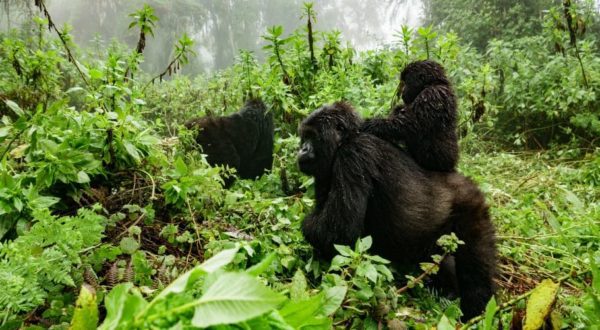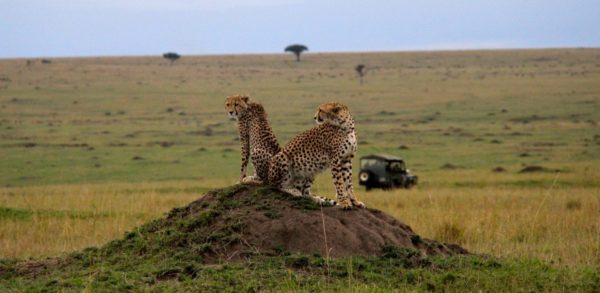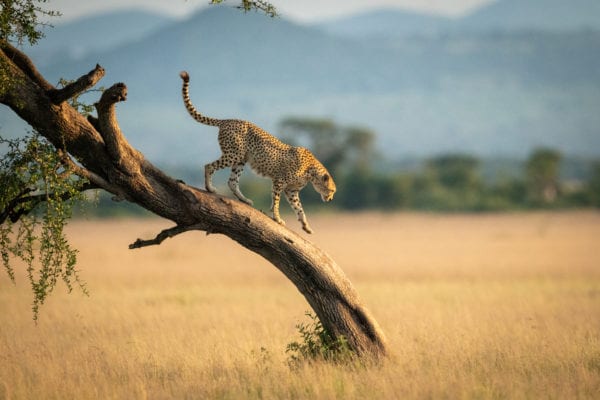SERENGETI SAFARI
The Quintessential African Experience
Serengeti Safari: Like Kenya’s Maasai Mara or South Africa’s Kruger National Park, the Serengeti of Tanzania is synonymous with safari.
Joint home with its Kenyan neighbour to both the Maasai people and the Great Migration, the Serengeti is renowned as one of the finest destinations to enjoy the quintessential safari experience.
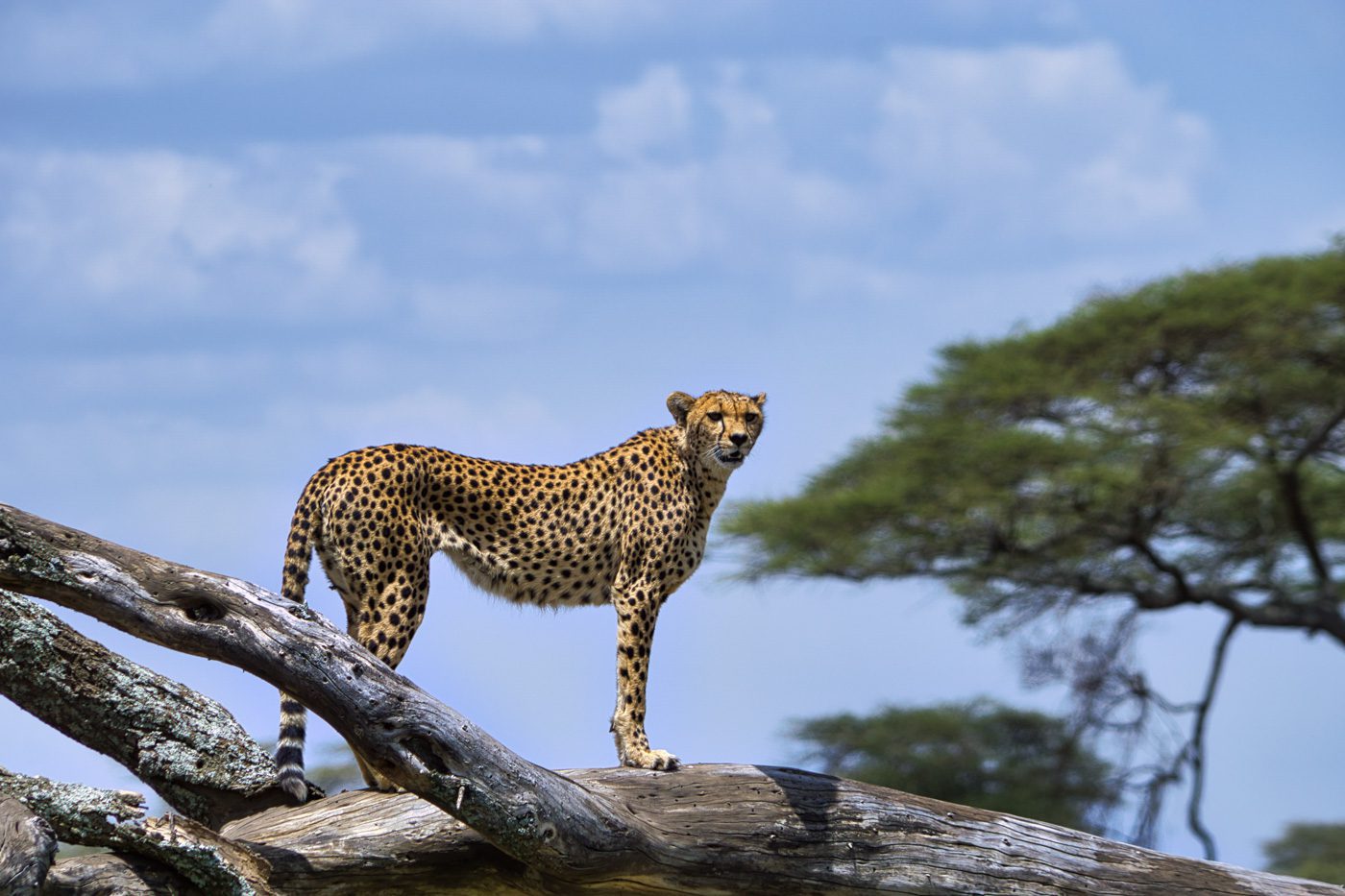
A Serengeti safari is one of dynamic diversity. One can witness 2 million grazing herbivores wandering in synchronicity across the plains, view the three primary big cats – cheetah, leopard and lion – see the drama of a migration river crossing unfold as hundreds of wildebeest plunge into crocodile-infested waters, and find black rhino wandering in solitude. An assortment of verdant river valleys, sun-bleached grasslands and waterholes teeming with life provide varying backdrops for tented camps, classic game drives and highly rewarding wildlife viewing.
Spanning almost 12,000 square miles (30,000km2), the Serengeti – which includes the national park of the same name along with several private conservancies – is immense. About the size of Vancouver Island, or three times the size of Hawaii’s Big Island, without the expert guidance we provide, one might take a Serengeti safari only to emerge fruitless, having seen few animals or completely missed the world’s second-largest animal migration. Likewise, you might only see one facet of this incredible destination which, spectacular though it might be, falls desperately short of the consummate Serengeti safari experience.
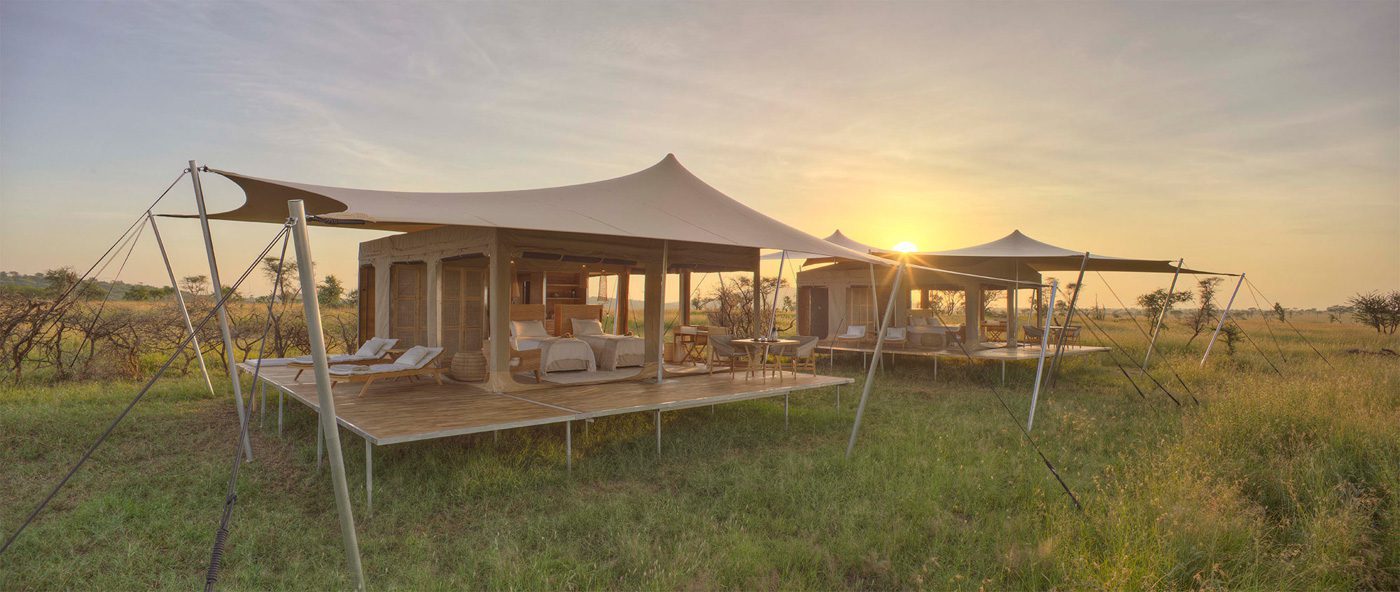
With many years of extensive and first-hand knowledge of Serengeti safari, we have given many clients the opportunity to enjoy the region to its fullest, from its woodlands to its kopjes, wide-open plains and magnificent wildlife.
With such a vast expanse to explore, where should you begin? These are five of the most rewarding Serengeti safari experiences and destinations.
-
The Classic Serengeti Safari
As with several parks and conservancies across Africa, the Serengeti presents the perfect vista upon which to venture out on a game drive. Though iconically conventional in some regards, it is the wonderfully rewarding epitome of safari.
Even aside from the Great Migration, which we will discuss shortly, a day’s drive will reveal prides of lion and solitary leopard, wandering herds of giraffe and elusive rhino, a wonderful spectrum of bird life, wallowing hippos and so much more.
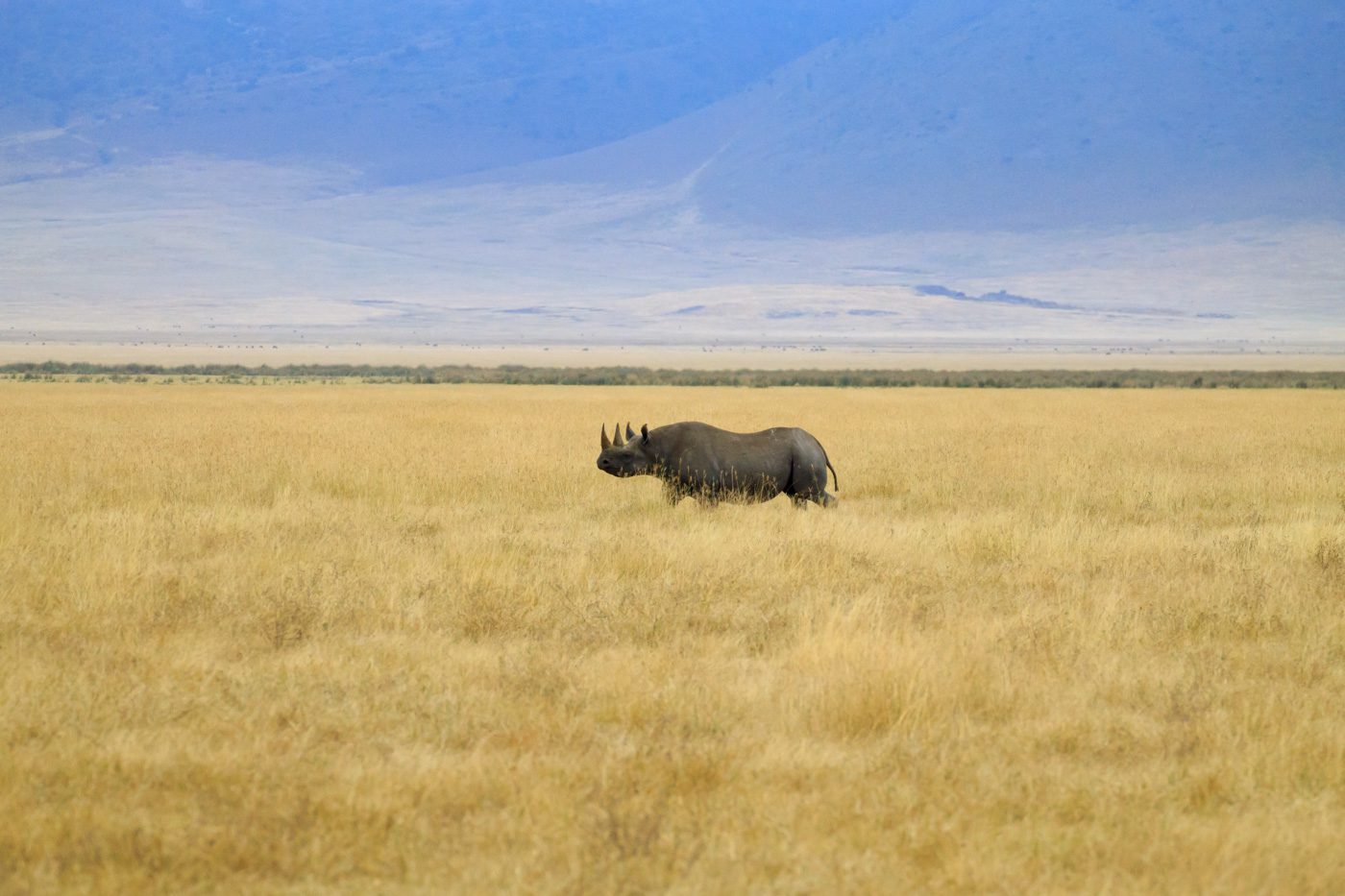
If the safari of Hollywood movies and National Geographic pages is your quest, the Serengeti will fulfill in abundance. But game viewing is just the beginning, and the way in which you participate offers diversity and excitement.
Wake for your Serengeti safari under canvas, in the colonial luxury of a tented camp, the gentle snorting and shuffling of horses easing you from sleep. After a superbly indulgent bush breakfast, you mount and trot from camp, venturing into the wilderness on horseback. From your lofty perch, you don’t simply view game from a new perspective, you become one with the herds, accepted as part of the scenery by the wild animals of the Serengeti.
Another change of perspective that is no less breathtaking is from the sky. Helicopter and light aircraft flights may give you a bird’s eye view, but from the basket of a balloon the impression of the vast grasslands, abundant fauna and spectacular horizons is infinitely more awe-inspiring. No Serengeti safari is complete without a hot-air balloon flight at dawn or sunset.
So perfect is the classic Serengeti safari, it verges on cliche, and you will often pinch yourself, peering behind bushes or between trees wondering where the camera crew is hiding upon this perfect film set.
-
The Great Migration
Though combining the Great Migration with a more extensive African adventure is highly advisable, it is also only one dimension of a more complete Serengeti safari. However, it really is unmissable, more than justifying its place as one of Africa’s seven natural wonders.
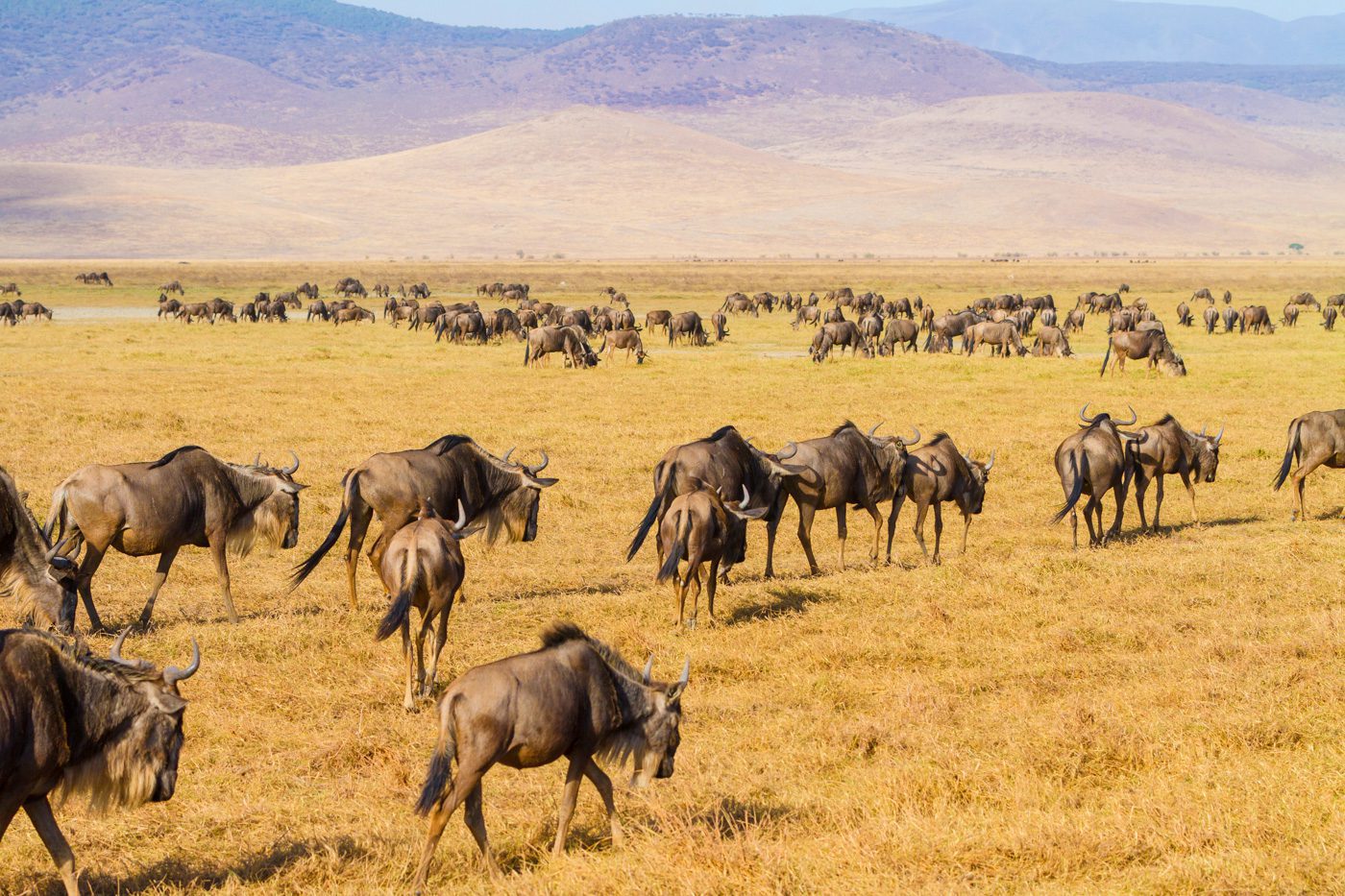
Rather than a migration in the truest sense of travelling from A to B, the Great Migration is in permanent transit, roaming clockwise from the Serengeti up into the Maasai Mara and back again.
The sheer mass of beasts in this vast herd is unfathomable, and no camera or video can capture its immensity or grandeur. It is also incredibly changeable, requiring more than a fleeting visit to truly experience.
From December to July, the Serengeti is teeming with life as the migration slowly makes its way across the lush grasslands. It has been estimated that upwards of one million wildebeest and 500,000 or more zebra, along with various antelope species, circumnavigate the route annually. January and February mark calving season, adding another attraction to the experience, and not just for human visitors. Predators stalk the herds, searching for the young or weak, and this leads to increased drama through the early months of the year.
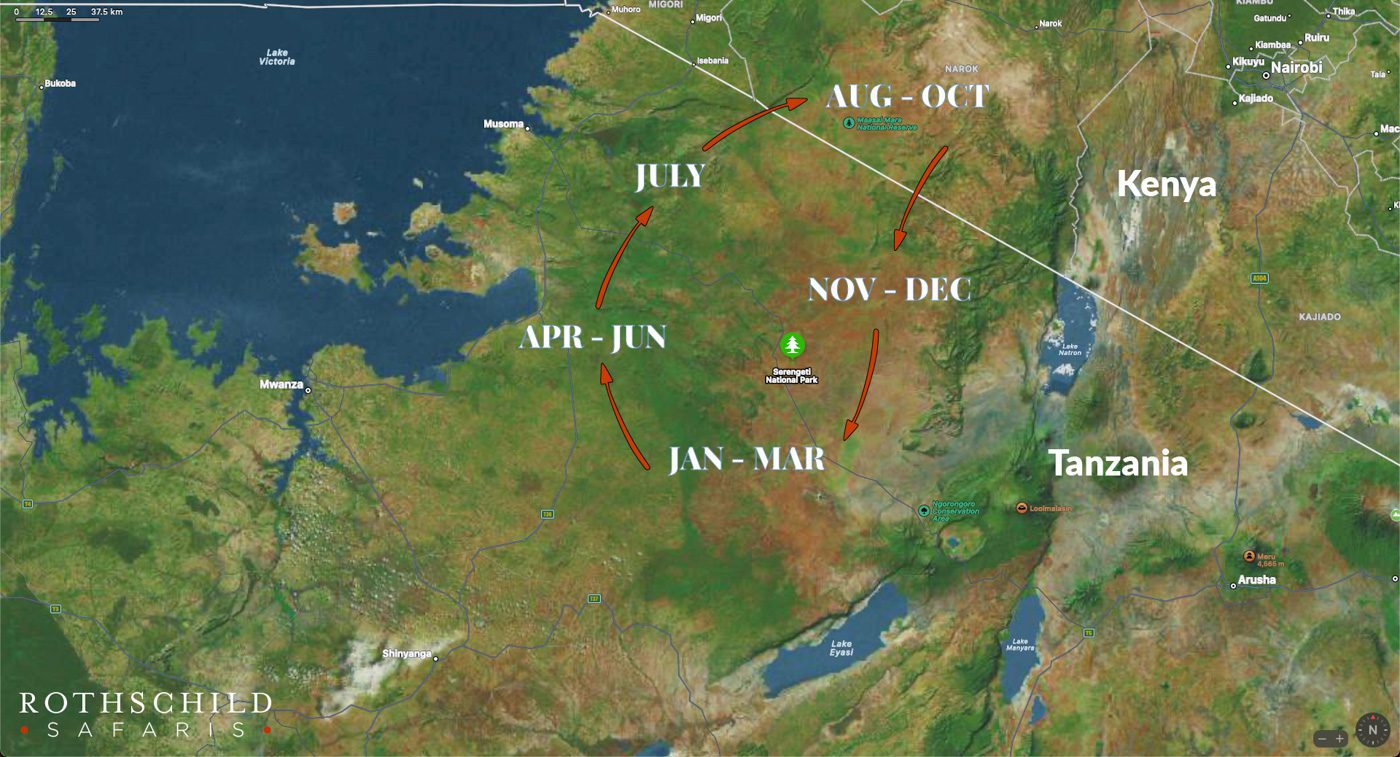
As brutal and tragic as the Great Migration can be, it is also the very lifeblood of this region of Africa. Without it, the grasslands would become less fertile, the predators would vanish and even the migratory herbivores would suffer.
-
The Ngorongoro Crater
The Ngorongoro is one of the world’s largest volcanic calderas, its surrounding rim reaching over 2,000 feet from crater floor to summit. Though animals do come and go and the crater isn’t entirely sealed off from the neighbouring Serengeti, it has formed its own microcosm, a perfectly balanced, self-sustaining ecosystem that is both abundant and diverse.
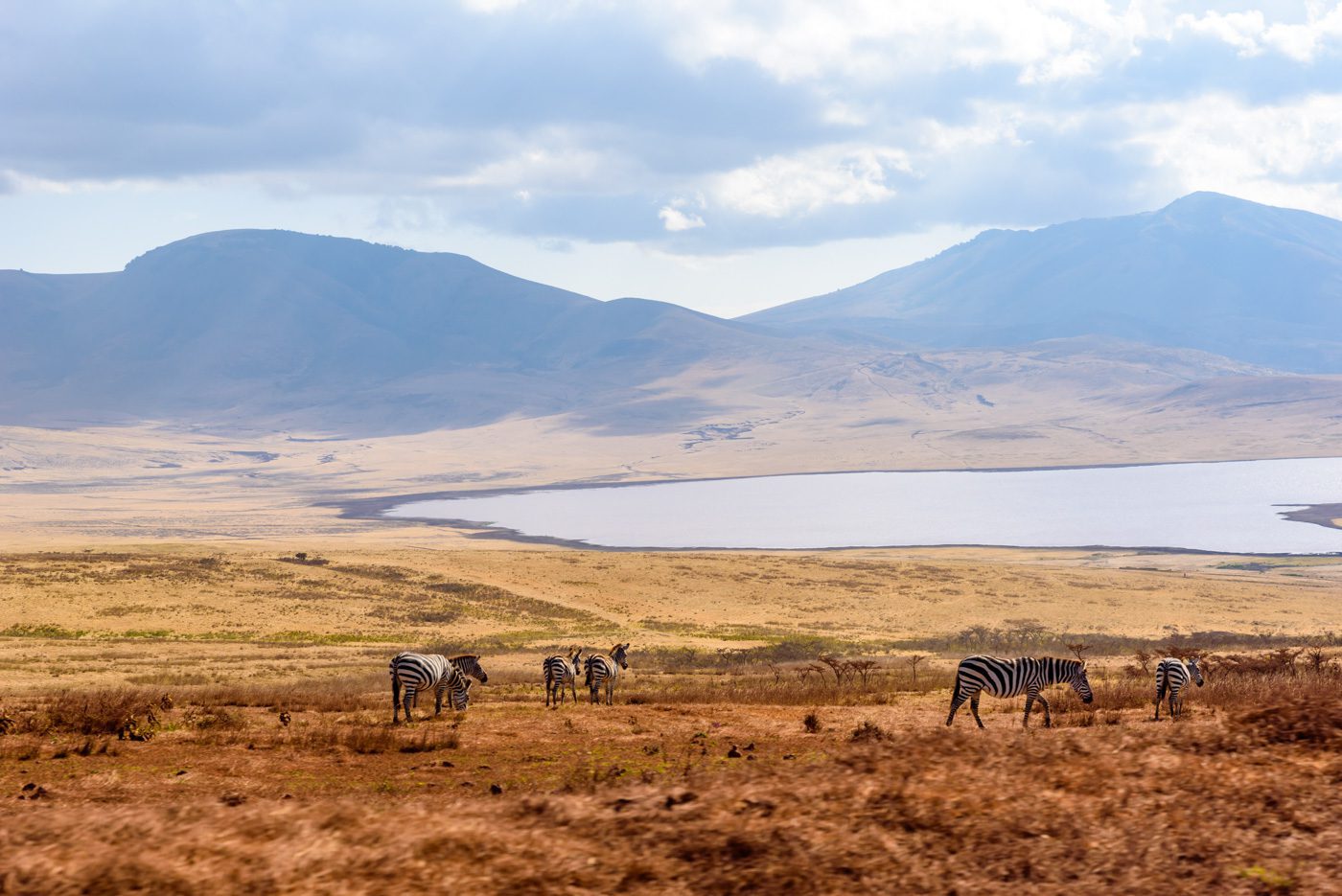
Though technically not part of Serengeti National Park and forming its own conservation area, it is often included as part of a larger Serengeti safari. Its unique geography makes it both spectacular and wonderfully populous, with over 25,000 animals sharing the capacious crater.
This is a superb destination if you are searching for some of Africa’s rarer species, particularly black rhino and wild dogs. The stunning landscape also provides the perfect setting for a picnic – an exclusive treat that we encourage our guests to indulge in.
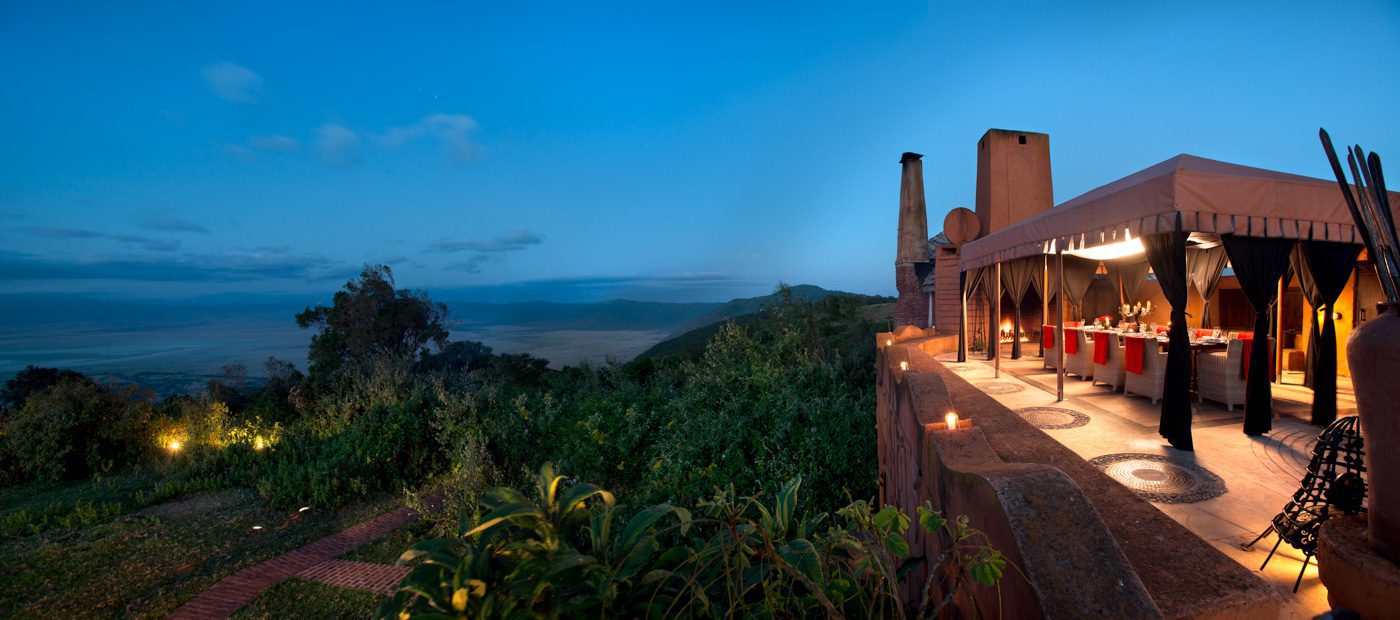
The nearby Olduvai Gorge is another addition to the Ngorongoro. Considered one of the world’s foremost paleoanthropological sites, it holds evidence of some of the planet’s oldest human civilisation and has proved an invaluable chapter in the story of our evolution.
-
Moru Kopjes
A kopje is a small hill or outcrop – a rarity on the wide plains of the Serengeti. Located at the heart of the national park, Moru kopje is also a place of anthropological significance, with remarkably clear and detailed cave paintings and the incredible Gong Rock, which bares circular hollows thought to once have been used for communication.
The kopjes also give you an elevated vantage point on your Serengeti safari to gain a great perspective of the sheer magnitude of the plains.
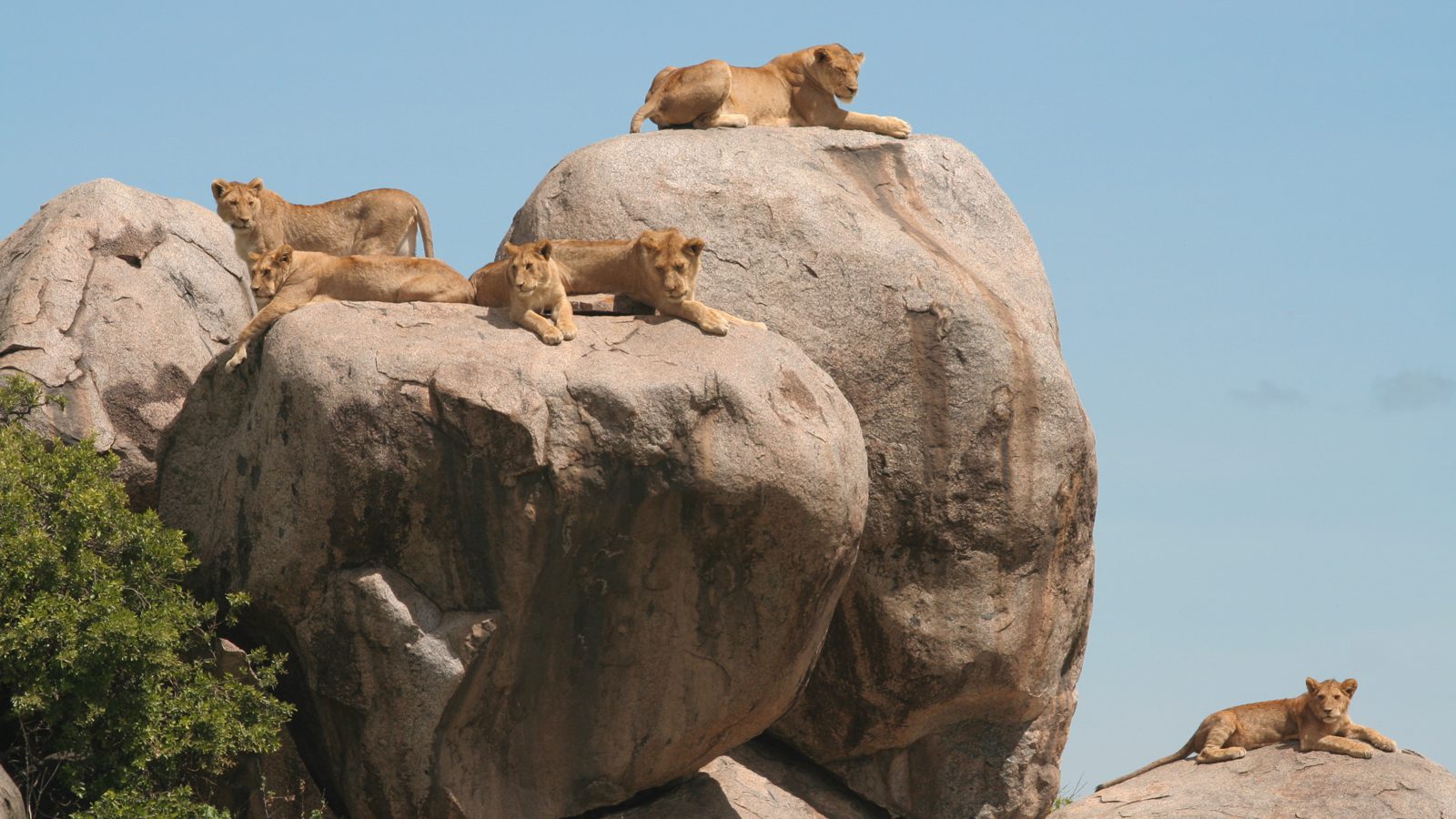
Over past decades, the Serengeti region suffered from significant poaching and the black rhino was all but eradicated. Though still highly threatened, and with conservation efforts drastically diminishing the threat of poaching, one of Tanzania’s only remaining populations resides in the shadow of the kopjes and visitors often journey here for that very reason.
Fed by the Mbalageti River, the area is perennially lush, and game viewing, though slightly less in terms of species diversity, is very consistent year-round.
Lake Magadi lies just to the northeast of the Moru Kopje. Though not connected geographically, as the name suggests it bears some similarities to Botswana’s Makgadikgadi salt pans, ‘magadi’ being the Kiswahili word for ‘soda’. The briny lake, like others across Africa, attracts flambouyances of flamingo that travel for many miles to feed on the salt lake’s plankton. Interestingly, without this plankton, flamingo lose their vibrant pink hue. When in captivity, flamingo are often fed a supplement to maintain their colour.
-
Grumeti River
The Great Migration is incredible at any turn of its endless progression, but the Grumeti River is a spectacular nexus of the journey.
Wildebeest arrive here at one of the river’s lowest points, the rains a memory and the watermark falling significantly. This creates an easier crossing point, but also draws closer together the river’s crocodile population.
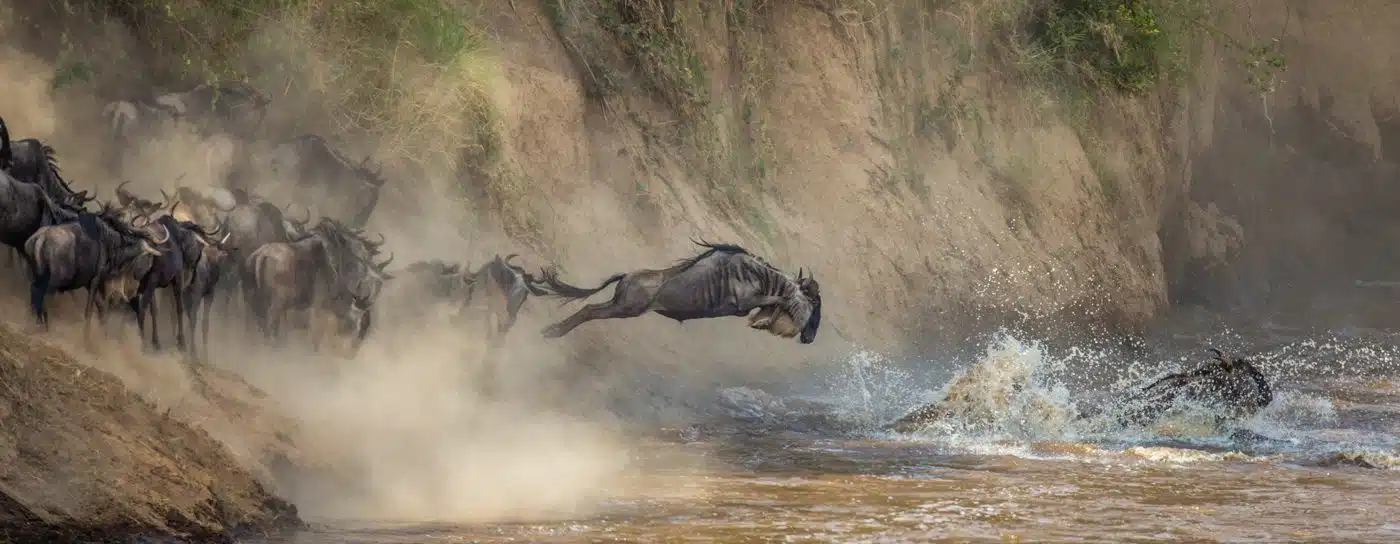
Bellowing on the banks, the herds gather, desperate to cross to fresh pastures, but too timid to make the dramatic leap and perilous crossing. A single brave individual eventually succumbs to the insatiable instinct and the herd surges forward in a tumult of dust, water and snapping teeth.
It is impossible to guarantee such scenes, but at the right time of year, with an expert guide, a gourmet picnic and a little patience, the likelihood is greatly increased.
Feeding the surrounding plains, the Grumeti River is a vital water source year-round, so even without the migration, one can still enjoy some excellent game viewing, particularly of the bigger mammals including elephant, hippo and waterbuck.
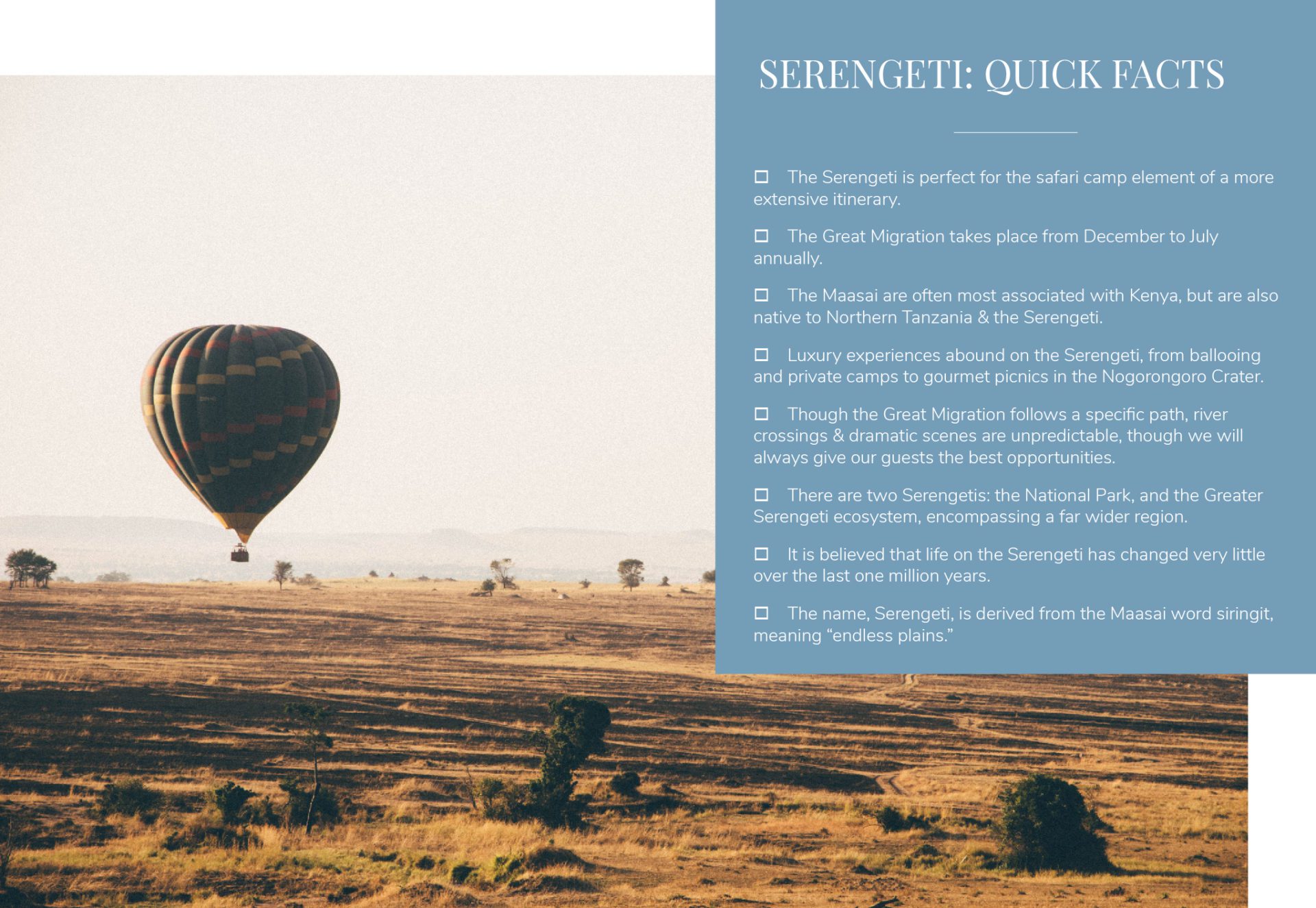
In many ways, a Serengeti safari is complete. You can check off the Big Five, see the Great Migration, enjoy luxury camps and lodges, connect with Maasai communities, and travel by balloon or horse or private four-wheel drive. With a shorter timeframe, the Serengeti is the perfect solution. However, with such abundance within a comparatively small area, a Serengeti safari works impeccably with an alternative experience. Gorilla trekking, coastal explorations, the Namibian desert or tropical escapes all combine with and perfectly complement a Serengeti adventure as does a more extended Tanzania safari.
Learn more about Tanzania, or contact your Travel Designer today.

